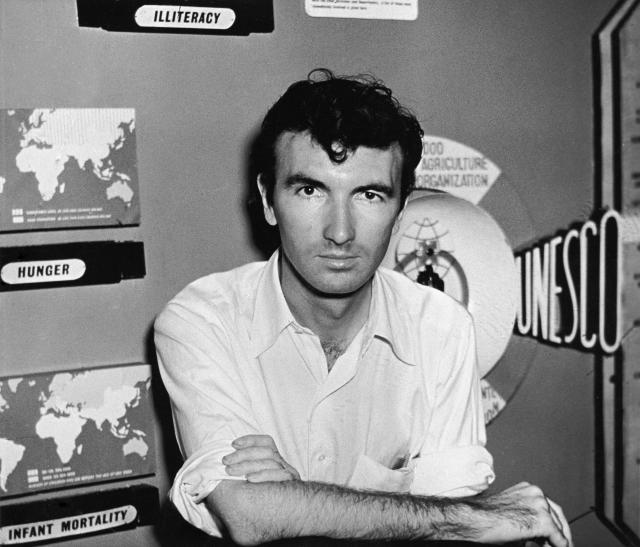 |
| Norman McLaren |
Norman McLaren (11 April 1914 – 27 January 1987) is a Scottish, Canadian
animator and film director famous for his works on visual music, drawn on film
animation and abstract films.
McLaren studied in Glasgow School of
Fine Art; however his fascination with dance and film led him to join the
school’s Kine Society. There he made his earliest film documentary, Seven Till Five (1933 and even developed
more of his interest in film making and techniques. After graduating, he began
working under John Grierson, there he created his film Love on the Wing (1937) which he also gained interested and began
using the technique of drawing directly and scratching on film strip as he did
not have access to cameras. In 1939, McLaren immigrated to the United States,
where he made several abstract films whilst “dancing” along to the beat of the
music, notably Stars and Stripes (1940)
and Dots (1940).
One of his works, Lines Horizontal (1962) which involved
lines moving around the screen whilst following to the dynamics and rhythm to
the jazz music. McLaren used his technique of drawing directly
onto the film for this animation and based on his previous film, Lines Vertical (1960), as
described by Donald McWilliams, writer of McLaren’s biography for his site, Focus
on Animation, states that, “vertical
lines only were animated by engraving directly with a stylus and a ruler onto
black film; in 1962, these same lines were turned optically 90o to become Lines
Horizontal.” (McWilliams, unknown).
 |
| Different frames showing the horizontal lines movement |
Another of his famous works, Le Merle (Blackbird) (1958) is based on a French- Canadian folk song, which describes
about the creation of the white cutout blackbird on losing and regaining its
body parts on a pastel coloured background. National Film Board of Canada describes
McLaren’s animated film, “Norman McLaren
imparts unusual activity to an old French-Canadian nonsense song. Simple white
cut-outs on pastel backgrounds, many by Evelyn Lambart, provide lively
illustrations. The folksong "Mon Merle" is sung in French by the Trio
Lyrique of Montréal.” (NFBC, 2010)
 |
| Le Merle (Blackbird) (1958) |
McLaren developed the technique of multiple imaging as seen notably in
his ballet film, Pas De Deux (1968).
Using multiple image layers onto film creates“trail” of the ballet dancer’s
previous actions as she begins to fall in love, this technique helps add the
emphasis on the dancer’s legs and arms movements as well as emphasizing on the
idea of time as she finds her partner. Here, Fosco Lucarelli writer for the post on Socks Studios describes the work on McLaren’s piece. “The film sees two performers
dancing a Pas De Deux, filmed on high contrast film stock with very stark side
lighting. This is augmented by step-and-repeat printing on an optical printer.
This gives the film an almost stroboscopic appearance.”
(Lucarelli, 2010)
 |
| Multi imaging in Pas De Deux (1968) |
List
of Illustrations:
Taylor, A (1950) Norman McLaren image (online):
Rehn, D (2011) Different frames showing the horizontal lines movement (online):
Jensen, T (2006) Le Merle (Blackbird) (online):
The Movie Doc (2010) Multi imaging in Pas De Deux (1968) (online):
Bibliography:
NFBC (2010) Le Merle
(online):
Lucarelli, R (2010) Pas De
Deux by Norman McLaren (online):






















